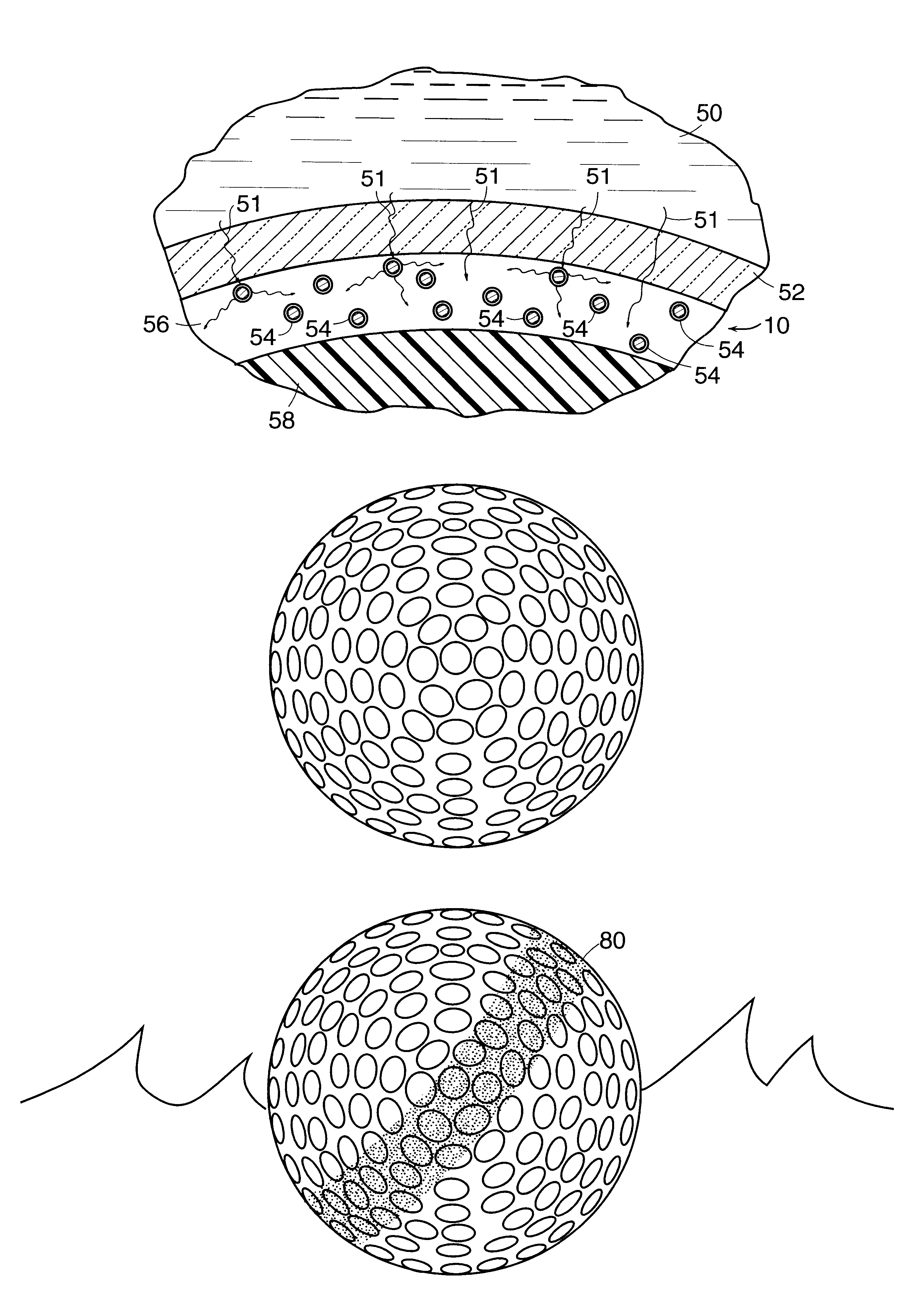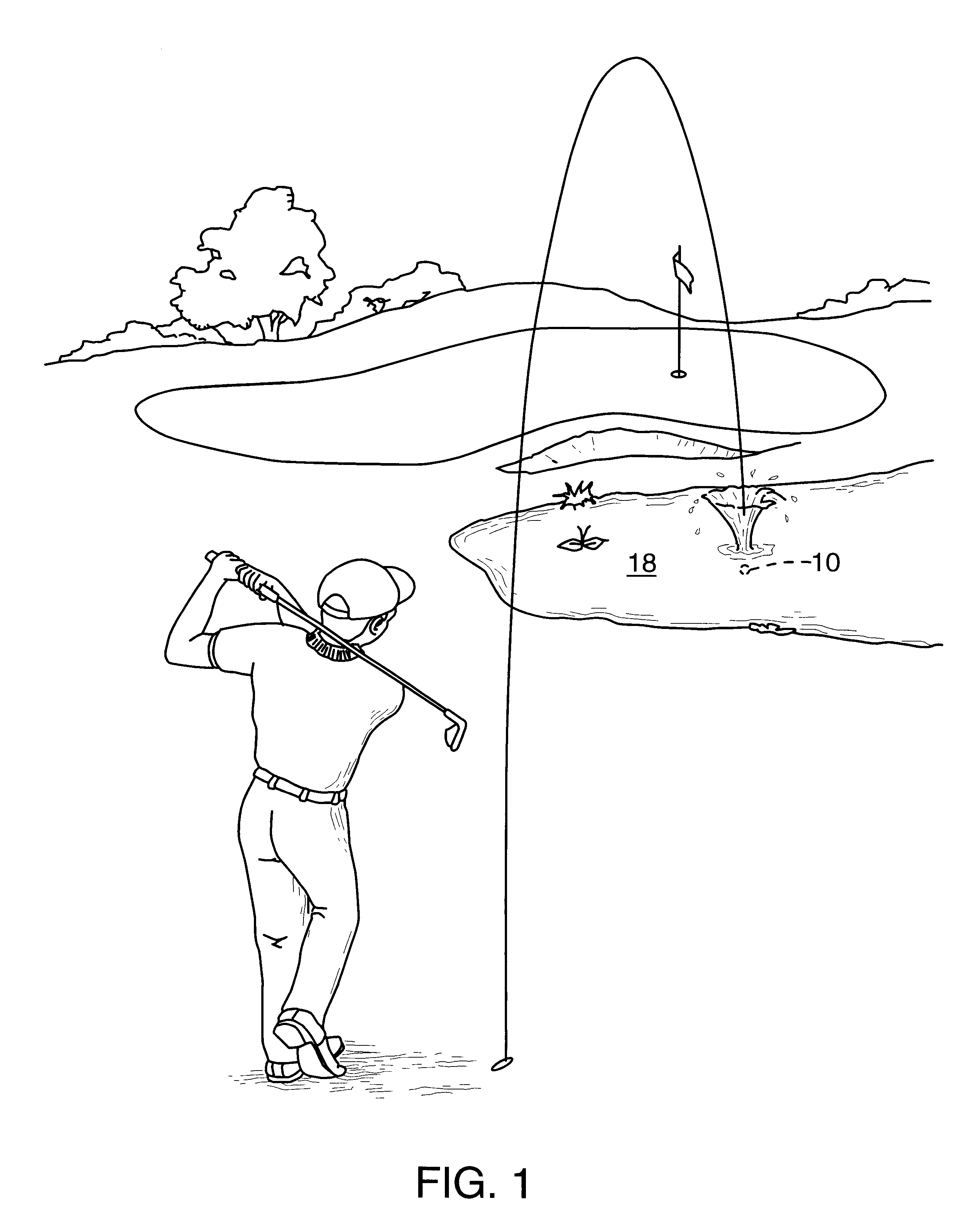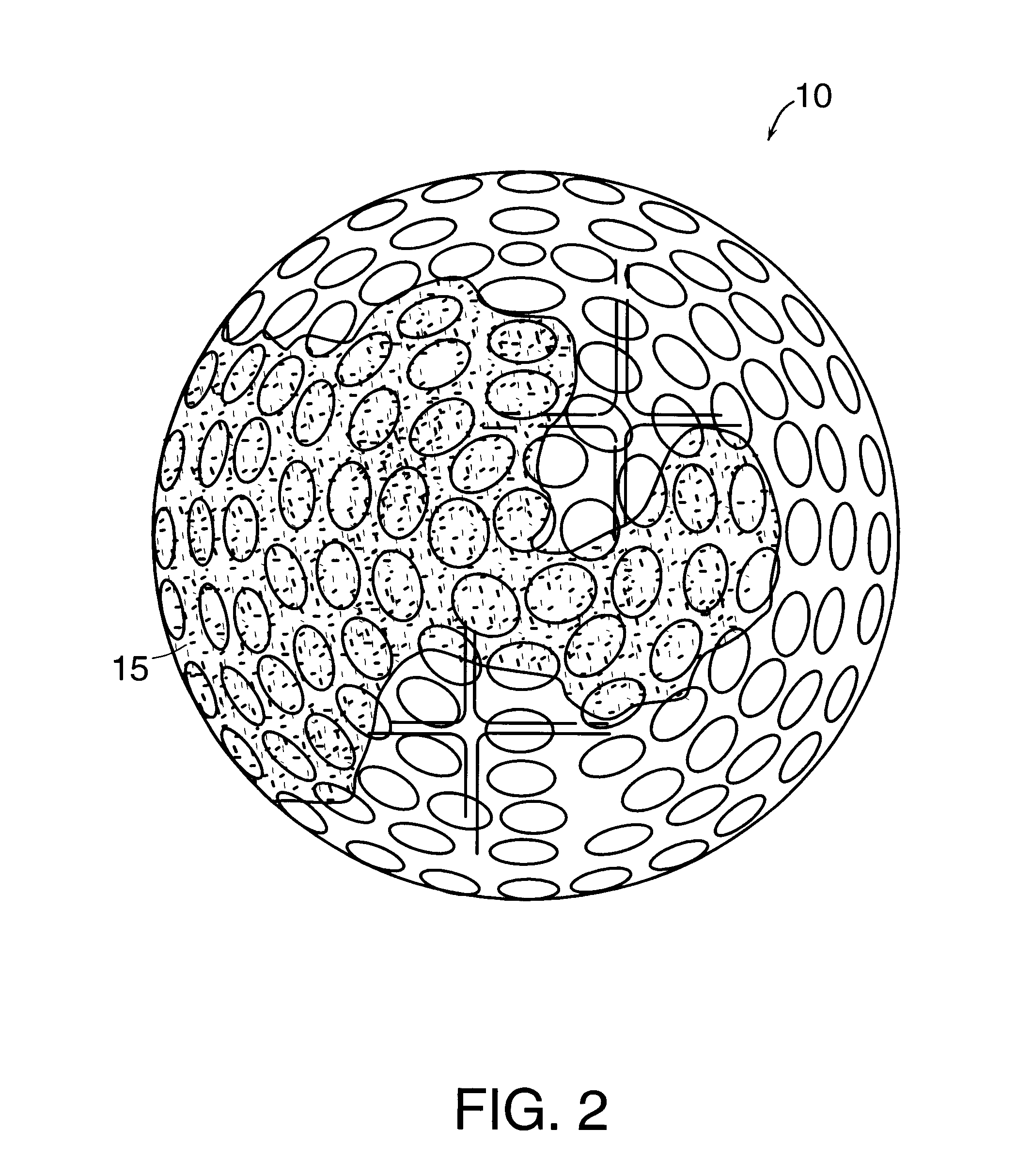Golf ball with water immersion indicator
- Summary
- Abstract
- Description
- Claims
- Application Information
AI Technical Summary
Benefits of technology
Problems solved by technology
Method used
Image
Examples
first embodiment
In the first embodiment, the dye used is a common water soluble dye, Nile Blue. This dye is a crystalline material at room temperature and is available as a granular powder containing crystals that are 20 to 40 microns in size. These solid crystals are hard and non-porous and small enough that when dispersed in a matrix at low concentrations, there will be no detected color change. The individual dye particles would be encapsulated with a gelatin coating using gelatin coacervation in an organic solvent to prevent water solubilization of the dye molecules; procedures for coacervation are well-known, and have been used in drug encapsulation and in the cosmetics and agricultural industries for many years. The encapsulated dye would then be isolated and added in a 1% by mass concentration to a polymeric gloss coating such as a polyurethane or polyester gloss coat. The two piece Surlyn coated ball would be dip-coated with the gloss coat resin which would then be dried during a solvent re...
example 2
A second embodiment involves the use of a dye particle encapsulated in a water-soluble polymer such as polyethylene oxide or poly acrylic acid, by formation of a mixture of hard dye particles in a fluid prepolymer. The prepolymer could be, for example, a water soluble polyacrylamide resin with a temperature activated initiator and bisacrylamide crosslinker agent. The mixture would be added dropwise to an incompatible organic solvent such as toluene with an emulsifying agent such as polyvinyl alcohol with stirring at high speeds. The emulsified drops are polymerized when the emulsion is heated, and the resulting beads contain dye particles. This process can be adjusted to produce dye beads in varying sizes. 100 micron size beads would be produced for this application. The resulting beads should not be colored because the bead formation process is done in the absence of water under controlled conditions. The resulting beads are then isolated, and added in 1% by weight to a polyurethan...
example 3
In a third embodiment, a colorless compound called a color former is used. Color formers are converted to strong dyes when exposed to a developer. The developer is a slightly acidic clay or resin which absorbs or dissolves the color former and results in a colored dye. This technology is extremely well developed and has been used for thermal printing, electrochromic printing, and pressure sensitive (carbonless copy paper) industries. Colors achieved with these dyes include very deep black and blue shades that would be easily recognized against a white golf ball.
In this invention, the developer would be mixed in the gloss resin along with encapsulated particles containing the color former. Water diffusion would activate the developer, and water and developer would diffuse into the microparticle containing the color former. The resulting dye would then be released from the microparticle. In this example, a common color former known as Crystal Violet Lactone, which goes from colorless ...
PUM
 Login to View More
Login to View More Abstract
Description
Claims
Application Information
 Login to View More
Login to View More - R&D
- Intellectual Property
- Life Sciences
- Materials
- Tech Scout
- Unparalleled Data Quality
- Higher Quality Content
- 60% Fewer Hallucinations
Browse by: Latest US Patents, China's latest patents, Technical Efficacy Thesaurus, Application Domain, Technology Topic, Popular Technical Reports.
© 2025 PatSnap. All rights reserved.Legal|Privacy policy|Modern Slavery Act Transparency Statement|Sitemap|About US| Contact US: help@patsnap.com



